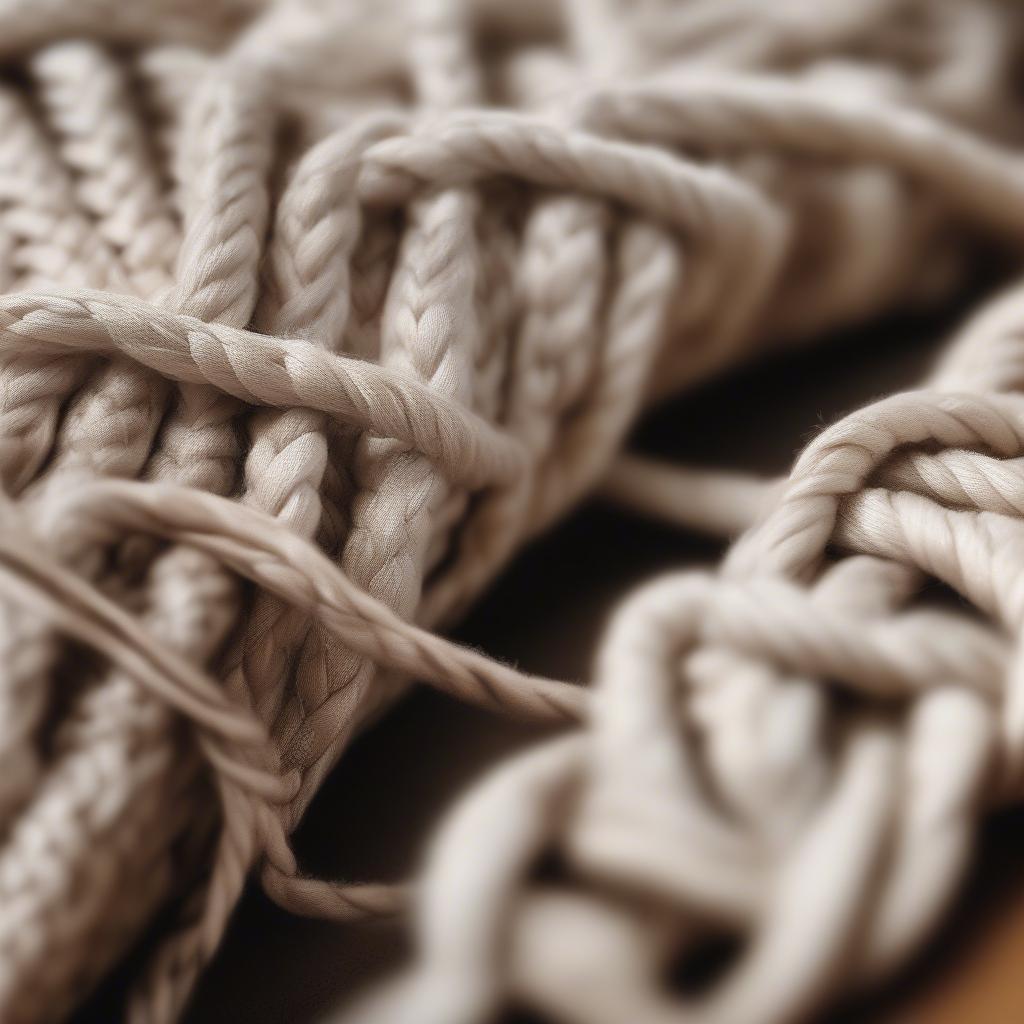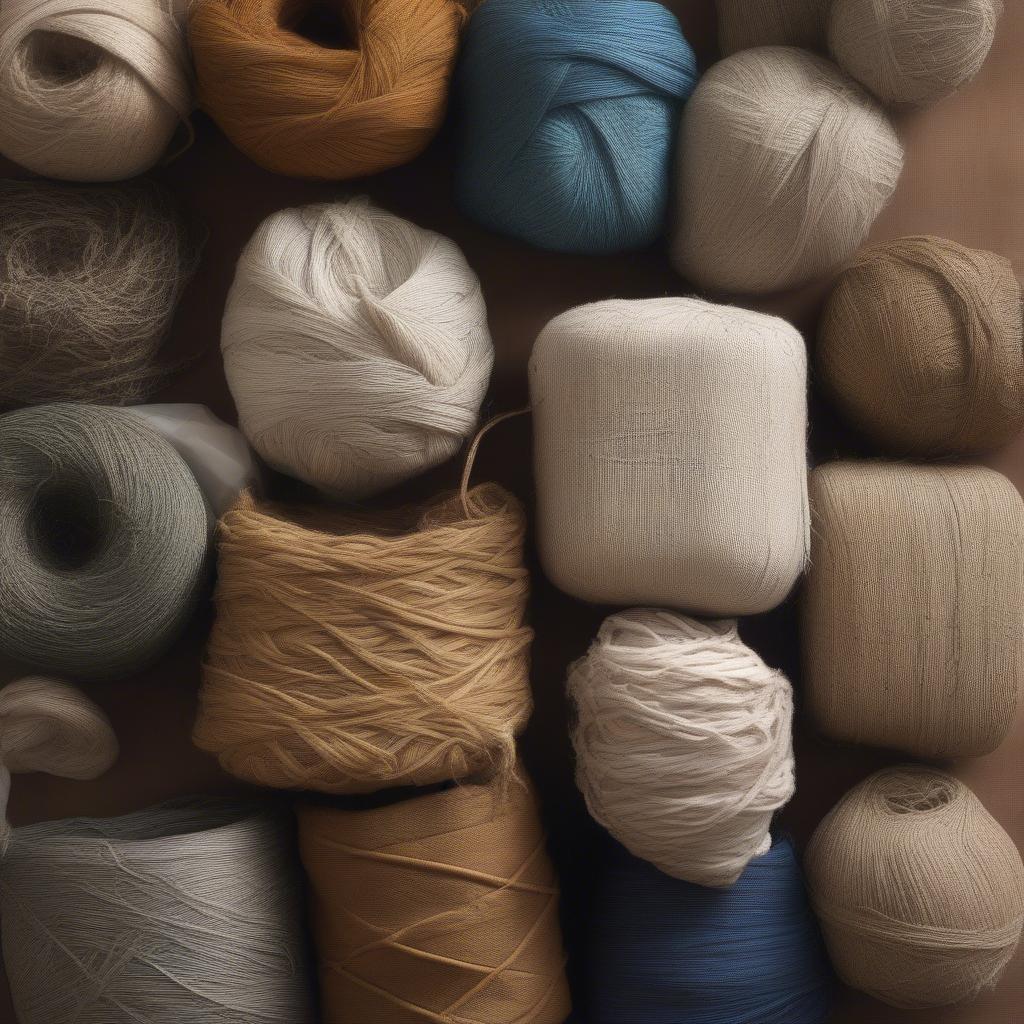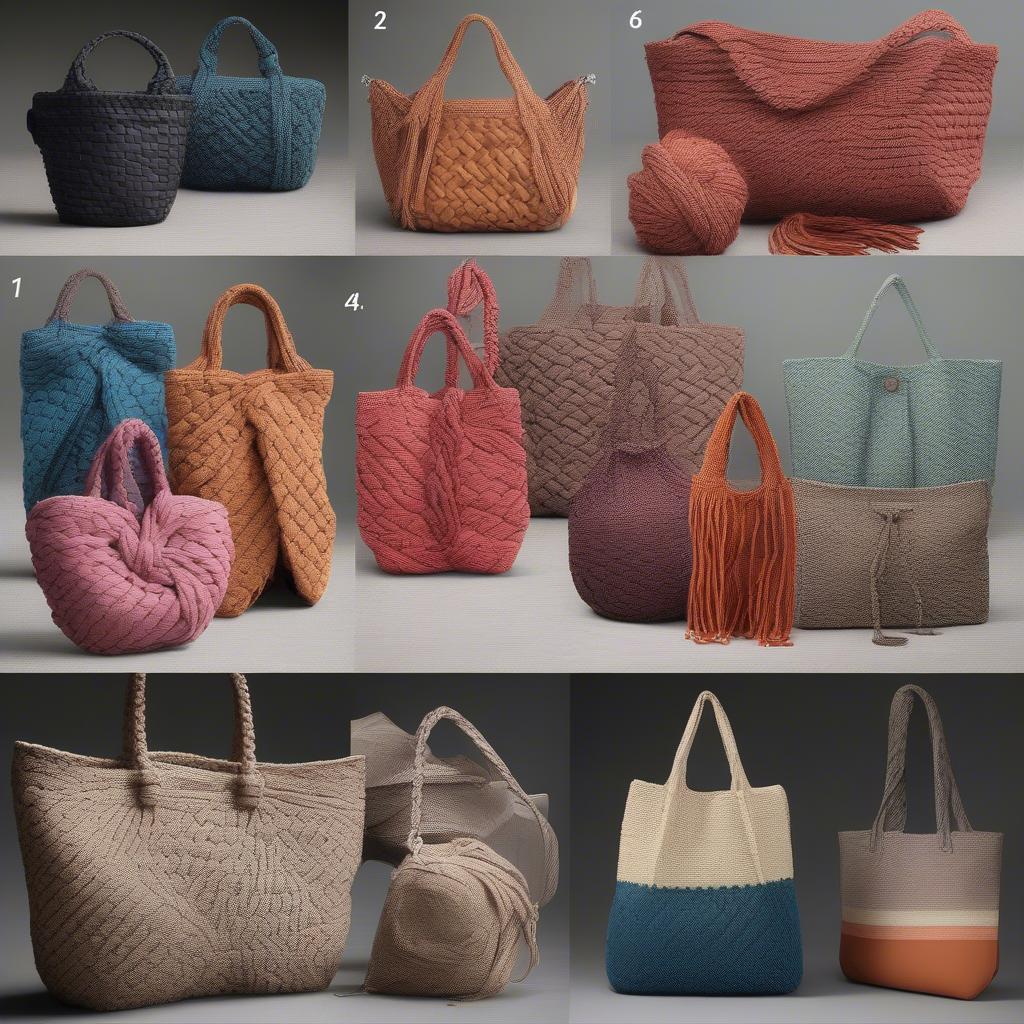Basket Weaving
Knot Weave Bag: A Deep Dive into Artistry and Durability
Knot Weave Bags are experiencing a resurgence in popularity, and for good reason. These handcrafted accessories offer a unique blend of artistry, durability, and sustainable style. From the intricate knotting techniques to the natural materials used, a knot weave bag tells a story of craftsmanship and connection to tradition. Let’s explore the world of knot weave bags, from their history and creation process to their diverse styles and care tips.
 Close-up view of a beautifully crafted knot weave bag showcasing intricate knotting details and natural fiber texture.
Close-up view of a beautifully crafted knot weave bag showcasing intricate knotting details and natural fiber texture.
Understanding the Art of Knot Weaving
Knot weaving, also known as macrame, is a textile-making technique that uses knots to create various patterns and textures. Unlike traditional weaving that utilizes a loom, knot weaving relies solely on the skillful manipulation of cords or threads. This technique allows for incredible detail and complexity, resulting in unique and visually appealing pieces. From simple square knots to elaborate Celtic knots, the possibilities are endless. Check out our guide on weave a net bag to learn more about different weaving techniques.
The Beauty of Natural Materials
Knot weave bags are often crafted from natural, sustainable materials like cotton, linen, jute, hemp, and even recycled plastic. These materials not only contribute to the bag’s aesthetic appeal but also enhance its durability and eco-friendly nature. The natural fibers offer a unique texture and often age beautifully, developing a rich patina over time. The use of recycled materials further adds to the bag’s sustainable appeal, making it a responsible choice for the environmentally conscious consumer.
 Variety of natural fibers used in knot weave bags, including cotton, linen, jute, hemp, and recycled plastic.
Variety of natural fibers used in knot weave bags, including cotton, linen, jute, hemp, and recycled plastic.
Choosing the Perfect Knot Weave Bag
With a wide array of styles, sizes, and materials available, finding the perfect knot weave bag can be an exciting journey. Consider the following factors to help you make the right choice:
- Size and Functionality: Do you need a small clutch for evenings out or a large tote for everyday use? Consider your needs and lifestyle when selecting the size and functionality of your bag.
- Material and Texture: Explore different materials like cotton for a softer feel or jute for a more rustic look. Think about the texture that best suits your personal style.
- Knotting Pattern and Design: From simple geometric patterns to intricate Celtic knots, each knotting design offers a unique aesthetic. Choose a pattern that resonates with you.
- Color and Embellishments: Knot weave bags come in a range of colors, from natural earthy tones to vibrant hues. Consider any embellishments, such as beads or tassels, that might enhance the bag’s overall appeal. You might be interested in learning about finger weave plastic bags for a DIY project.
Knot Weave Bag Styles for Every Occasion
Whether you’re looking for a bohemian beach bag, a chic city tote, or a stylish evening clutch, there’s a knot weave bag to suit every occasion. From market bags to crossbody styles, the versatility of knot weaving allows for a diverse range of designs. For those interested in exploring other woven accessories, check out our article on plastic laminated bag weaving.
 Different styles of knot weave bags, including market bags, crossbody bags, clutches, and totes.
Different styles of knot weave bags, including market bags, crossbody bags, clutches, and totes.
Caring for Your Knot Weave Bag
Proper care will ensure your knot weave bag remains a cherished accessory for years to come. Here are some tips for maintaining its beauty and durability:
- Cleaning: Spot clean with a damp cloth and mild detergent. Avoid harsh chemicals or machine washing.
- Storage: Store your bag in a cool, dry place away from direct sunlight to prevent fading or discoloration. You can also see how to weave a net bag.
- Protecting from Moisture: Avoid exposing your bag to excessive moisture, as this can damage the natural fibers.
“A well-made knot weave bag is an investment in craftsmanship and style,” says renowned textile artist, Eleanor Vance. “With proper care, these beautiful pieces can last a lifetime.”
Conclusion
Knot weave bags offer a unique blend of artistry and durability. These handcrafted accessories, made from natural and often sustainable materials, provide a stylish and eco-conscious alternative to mass-produced bags. From their intricate knotting patterns to their versatile designs, knot weave bags are a testament to the enduring appeal of handcrafted artistry. So, embrace the beauty and functionality of a knot weave bag and add a touch of timeless elegance to your wardrobe. Learn more about different weaving techniques with our guide on plastic canvas basket weave stitch.
FAQ
- What is the difference between knot weaving and macrame? (They are essentially the same technique.)
- What are the most common materials used for knot weave bags? (Cotton, linen, jute, hemp, and recycled plastic.)
- How do I clean my knot weave bag? (Spot clean with a damp cloth and mild detergent.)
- Are knot weave bags durable? (Yes, especially when made with high-quality materials and proper knotting techniques.)
- Where can I buy a knot weave bag? (Online marketplaces, craft fairs, and specialty boutiques.)
- Can I make my own knot weave bag? (Yes, with practice and the right materials.)
- Are knot weave bags eco-friendly? (Often, yes, especially when made from sustainable or recycled materials.)
Need help? Contact us at Hanoi, Vietnam or Tech Avenue, Suite 12, San Francisco, CA 94105, USA. We have a 24/7 customer service team.
